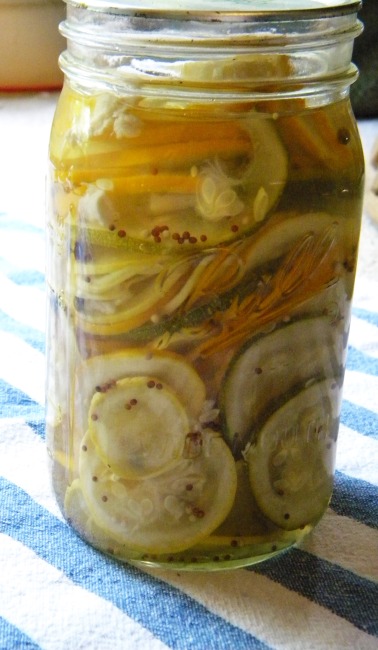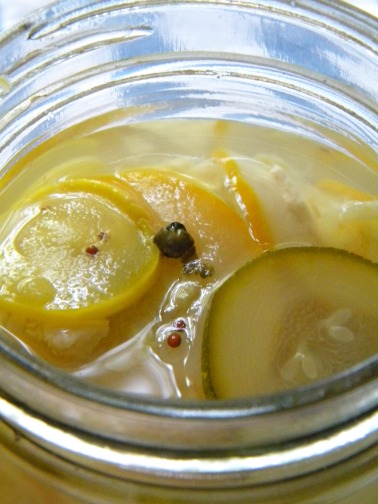Windham Gardens CSA Week Six
July 21, 2012 2 Comments
In the bag this week: Pattypan squash, Zucchini, Yellow Squash, Dragon’s Tongue Beans, Wax Beans, Green Beans, Garlic, Parsley, Basil, Swiss Chard, Pickling Cukes
I seem to be having one of those weeks, where my day job lacks proper adjectives to describe it. All I want to do after work is sit on the couch with a cocktail. I mean, more than usual. So this week, I had no plans to preserve, cook or otherwise for most of the week. Nothing. planned. Nothing. That means most of the squash, beans and greens need to be put up before more comes in next week. On weeks like this, I scour the internet for quick inspiration.
Have you checked out Punk Domestics yet? They are the first place I go for inspiration. Here are my plans for the share this week:
Sean of PD recommended this recipe: Zucchine Sott’Olio. Obviously not USDA recommended for waterbath canning, but just fine in the fridge.
Karen Solomon’s Beer Brine Pickles. Karen is the author of Jam It, Pickle It, Cure It AND Can It, Bottle It, Smoke It. She clearly knows her stuff. Plus, we always have a couple of bottles of great beer in the house. A nice change from your typical fridge pickles.
Jessie Knadler’s Zucchini Relish. Not usually a huge fan of relish, but Jessie’s claim it can turn relish skeptics with one bite? That’s quite an endorsement, worthy of putting up a few jars.
Finally, I am always down for a good batch of my own CSA Salsa. Tomatoes are just starting to come into our market, too.
For next week: anyone have a recipe to preserve beautiful Dragon’s Tongue beans and keep their color?















